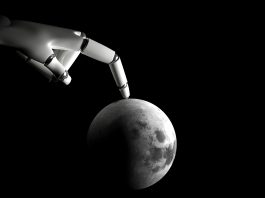Nokia of America has been awarded $14.1m from NASA for the development of the first-ever cellular network on the Moon.
The LTE/4G cellular network on the Moon will aim to facilitate long-term lunar habitability, providing communications for key aspects such as lunar rovers and navigation. Radio frequency interference (RFI) is a great issue for radio astronomers. Jodrell Bank – the earliest radio astronomy observatory in the world still in existence – was created because of RFI. Whilst studying at the University of Manchester, UK, Sir Bernard Lovell, one of the pioneers of radio astronomy, found that RFI from passing trams in the city were a major obstacle in his work, and he persuaded the university to let him move to their fields in Cheshire to continue his studies.
Since then, radio telescopes have been built more and more remotely in an attempt to avoid RFI, with the upcoming Square Kilometre Array (SKA) telescope being built across remote areas of South Africa and Australia. This helps to cut out many common sources of RFI, including mobile phones and microwave ovens. However, ground-based radio telescopes cannot completely avoid space-based sources of RFI such as satellites – or a future lunar telecommunications network.
Nokia of America’s new cellular network on the Moon could eliminate RFI and give astronomers access to more reliable data. This new development will also minimise interference from the Earth’s atmosphere, which significantly reduces the quality of the photographs taken of space.
NASA’s funding to support the Artemis programme
NASA has selected 14 American companies, including Nokia of America, to develop a range of technologies that will help forge a path to sustainable Artemis operations on the Moon by the end of the decade.
NASA Administrator Jim Bridenstine said: “NASA’s significant investment in innovative technology demonstrations, led by small and large US businesses across nine states, will expand what is possible in space and on the lunar surface. Together, NASA and industry are building up an array of mission-ready capabilities to support a sustainable presence on the Moon and future human missions to Mars.”
Each company involved in this partnership with NASA must contribute a percent of the total project cost. Combining NASA resources with industry contributions is essential to the development of critical space technologies.
As part of its Artemis programme, NASA plans to send the first woman and next man to the lunar surface in 2024 and establish a sustainable presence there by the end of the decade. The agency will use the Moon to prepare for its next giant leap – human exploration of Mars.









